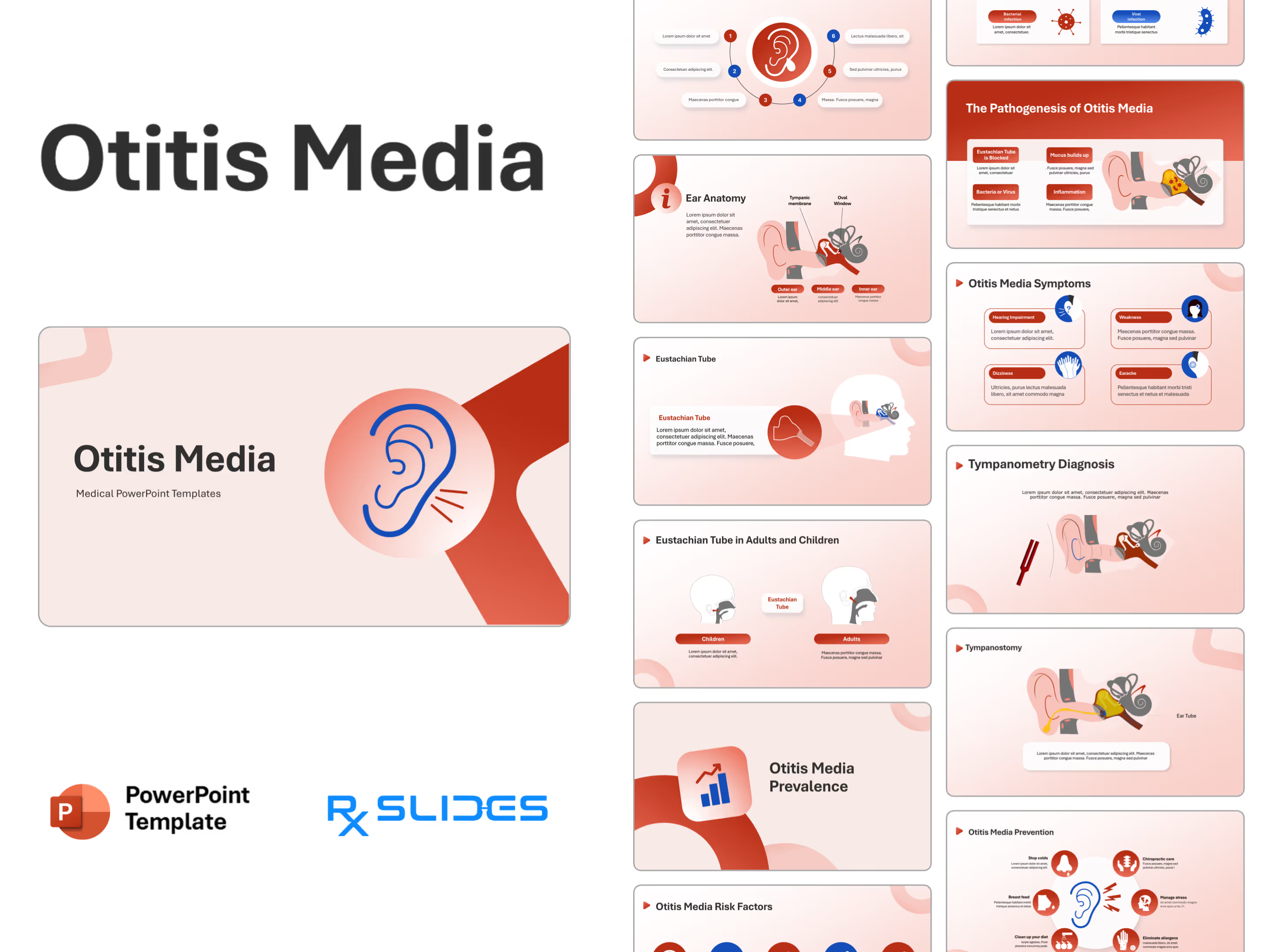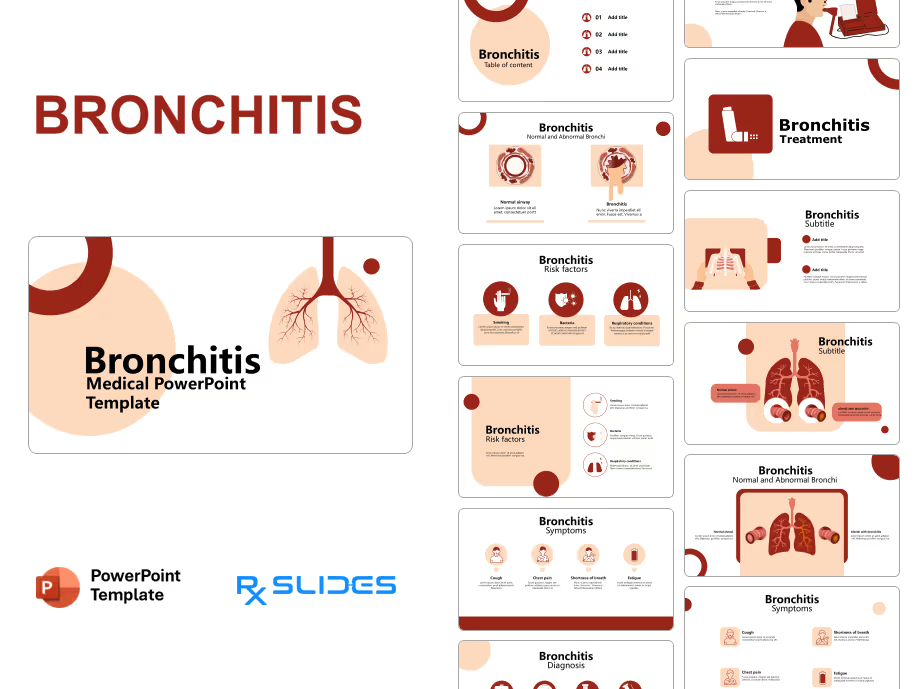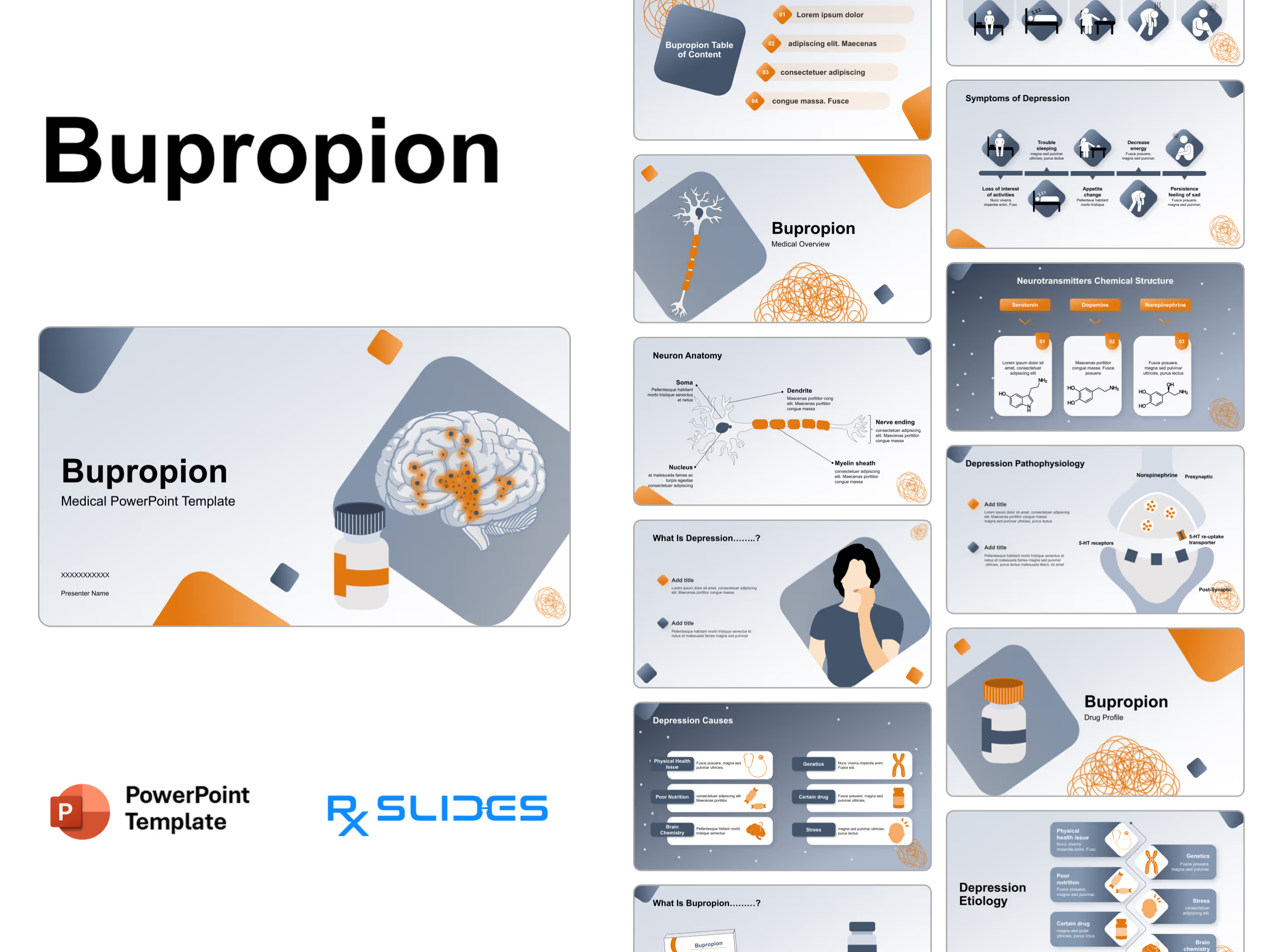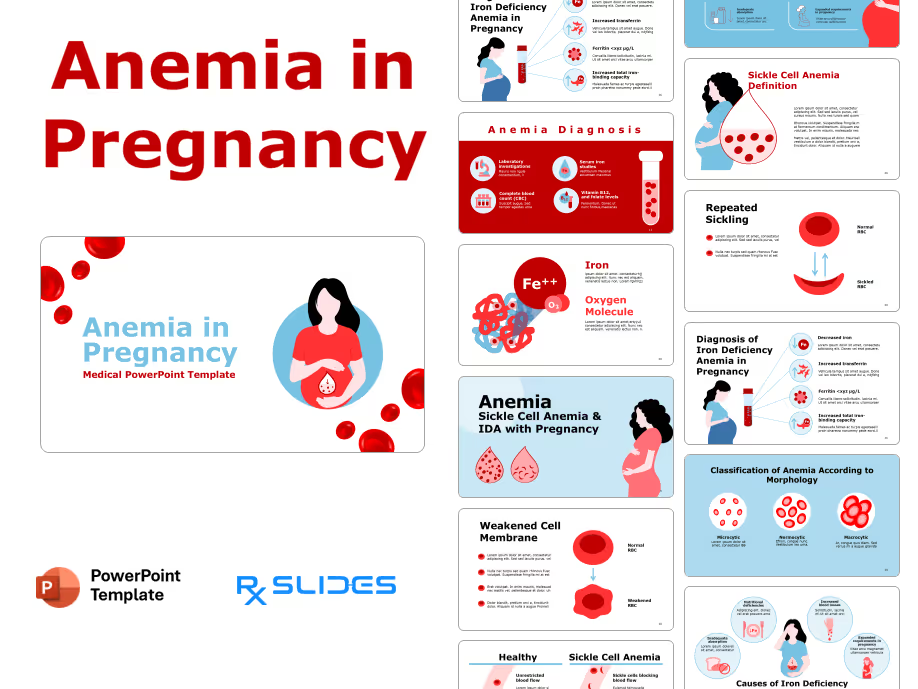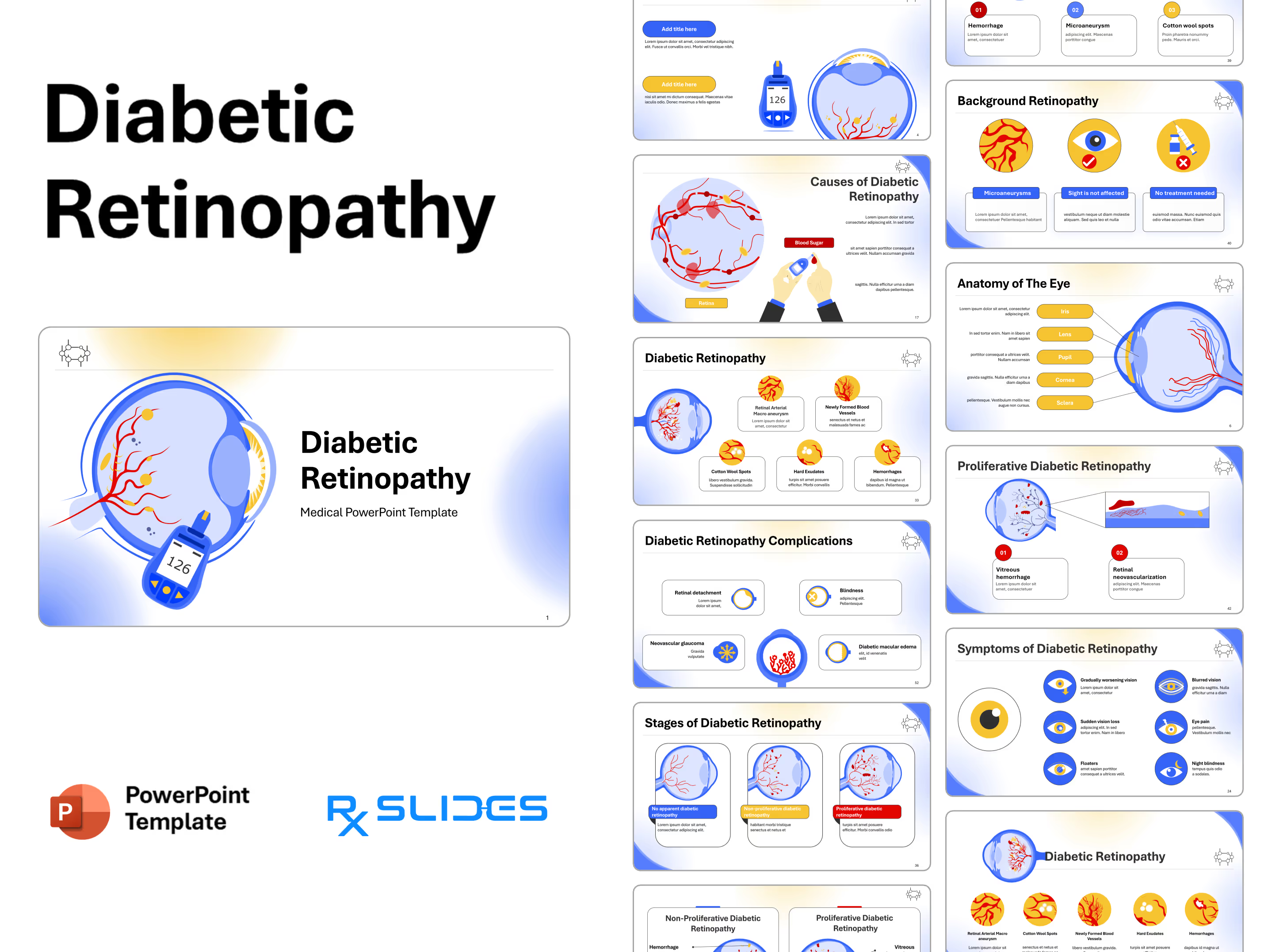Bacteriology PowerPoint Template
.avif)
Bacteria PPT: Medical PowerPoint Template
- The Bacteria PPT template is a dynamic medical PowerPoint template that will help you realize the full potential of your presentation.
- RxSlides include medical animations and infographics, which will attract your audience.
- You can rely on our demonstrated infographics to give your audience a dynamic and appealing bacteriology presentation.
- This template is valuable for microbiologists, marketing managers, doctors, medical students and workers in the infection control field.
Bacteria PPT Template Content
- Nice-looking cover slides to start your Bacteria PPT presentation with.
.avif)
Introductory slides explaining the bacterial structure
- Dynamic slides explain the characteristics of the bacteria with animated illustrations, including the details of the sites, prokaryotic cell structure, plasma membrane, cell wall, capsule, virulence and gram staining.
- Each part is illustrated with a descriptive animation.
- A comparative description of the cell wall in both gram-positive and gram-negative bacteria is provided in this section.
- A variety of bacteria will be widely discussed in this bacteriology PPT template.
Streptococcus pyogenes
Streptococcus pyogenes characteristics
- S. pyogenes is characteristically a gram-positive bacterium, a round-to-ovoid coccus with a thick peptidoglycan layer, non-motile, non-spore-forming and facultatively anaerobic.
- They divide in one plane and thus occur in pairs or (especially in liquid media or clinical material) in chains of varying lengths.
Virulence factors
- Animated illustrations in Bacteria PPT explain the role and mechanisms of capsules and toxins as virulence factors.
- S. pyogenes can produce several pathogenic virulence factors, including bacteriocins, hemolysin O, streptokinase, NADH enzyme, hyaluronidase and M protein.
Infection
- Pneumonia, lung abscess, brain abscess, meningitis and infective endocarditis
- A common complaint in cases of streptococcus pharyngitis is a sore throat. Clinical manifestations of streptococcal pharyngitis most frequently include fever that strikes suddenly, malaise, pharyngeal discharge, sensitive cervical lymphadenopathy and swollen tonsils.
- One of the most typical skin illnesses is impetigo. S. pyogenes causes non-bullous impetigo.
- A high-grade fever, sore throat, strawberry-like tongue and a blanchable, papular, non-confluent rash are the typical symptoms that a patient with scarlet fever presents with.
- Group A streptococcus (S. pyogenes) causes necrotizing fasciitis, a deep-seated subcutaneous tissue infection that quickly destroys fat and fascia.
- Post-infection sequela, diagnosis and treatment are illustrated with medical icons.
.avif)
Streptococcus pneumoniae
Streptococcus pneumoniae characteristics
- Streptococcus pneumoniae is a lancet-shaped, gram-positive, facultative anaerobic bacteria with more than one hundred known serotypes.
- Non-motile, non-spore-forming, with a thick peptidoglycan layer.
Virulence factor
- Animation illustrations explain that the organism produces a range of colonization and virulence factors, including the polysaccharide capsule, surface proteins and enzymes, biofilm, IgA protease, pili and the toxin pneumolysin (PLY).
- The description and mechanism of these virulence factors are illustrated with animations.
Infection
- Medical illustrations in the Bacteria PPT show that the organism colonizes the nasopharynx and can cause otitis media, pneumonia, bacteremia, pneumococcal endocarditis and meningitis.
Diagnosis
- Removing the organism from blood or other typically sterile body areas is necessary for a definitive diagnosis of Streptococcus pneumoniae infection.
- Diagnostic methods include PCR and cultures.
- Additionally, tests are available to show the capsular polysaccharide antigen in bodily fluids.
Vaccine
- There are two kinds of pneumococcal vaccines recommended in the United States:
- Pneumococcal conjugate vaccines (PCVs, specifically PCV15 and PCV20).
- Pneumococcal polysaccharide vaccine (PPSV23).
Treatment
- Medical infographics explain that High-risk Groups like older people, children under two years and people with chronic diseases should be vaccinated.
.avif)
Enterococcus
Enterococcus characteristics
- Enterococci are Gram-positive facultative anaerobic cocci in short and medium chains.
- It can tolerate extreme conditions like high-temperature high sodium chloride concentration and high PH conditions.
Virulence factors
- The potential virulence factors of enterococci include the production of enterococcal surface protein (Esp), gelatinase and hemolysin.
- Other virulence factors are explained in Bacteria PPT with animated illustrations explaining the mechanisms of biofilm formation and antibiotic resistance (acquired and inherited).
Hospital-Acquired Infection
- Hospital patients are often found to have Enterococcus spp—infections, which are linked to a high death rate.
- Enterococci are essential nosocomial pathogens causing up to 10% of all infections in hospitalized patients.
- The infections include urinary tract infection, biliary tract infection and subacute endocarditis.
Diagnostic methods
- These methods include imaging and lab tests.
.avif)
Clostridium
Clostridium tetani
Clostridium characteristics
- C. tetani is part of a genus of obligate anaerobic, saprophytic, gram-positive organisms and toxin-producing.
Habitat
- It is an organism that forms spores, is resistant to extreme temperatures and can live indoors and outdoors.
- Present in soil, sewage and intestine.
- It is impossible to remove from the environment.
- Tetanus spores are widely known to be heat- and disinfectant-resistant microorganisms that can persist in the background for several years.
Clostridium tetani Transmission
- For most people, an open wound is the cause of infection. Others may experience tetanus because of gangrene, burn injuries, surgical site abscesses, or intravenous drug misuse.
Pathogenesis
- Toxin-producing organism and considered the most dangerous of its genus clinical manifestations.
- Severe, diffuse muscle contractions characterize tetanus. The muscular rigidity and spasms of tetanus are caused by tetanus toxin (tetanospasmin).
- Treatment
Clinical manifestations
- Characterized by trismus lockjaw and opisthotonos position tetanus.
Prevention
- Use toxoid vaccine to initiate the immunity and booster dose needed.
Clostridium botulinum
Characteristics
- Clostridium botulinum is an anaerobic spore-forming gram-positive bacillus.
- It produces the most potent biological toxin known, botulinum neurotoxin.
Transmission
- Home-preserved (pickled and canned) foods, especially vegetables, seafood and cured meats, are the main foods linked to the spread of botulism.
- Infant botulism cases have been linked to honey.
Pathogenesis
- As illustrated in Bacteria PPT, BT binds to the acetylcholine receptors on the neuromuscular junctions, resulting in blockage of the release of the neurotransmitter, leading to flaccid paralysis.
Clinical manifestation
- The weakening of the muscles controlling the eyes, face, mouth and throat is typically the first sign of botulism. The neck, arms, chest and legs could all become weaker.
- Floppy paralysis is a characteristic sign.
- Additionally, botulism has the potential to impair the breathing muscles, which can result in breathing difficulties or even death.
- A comparative illustration between C. tetani and C. botulinum is provided to differentiate between the two mechanisms, involved neurotransmitters, symptoms and the type of paralysis.
Clostridium perfringens
Characteristics
- Clostridium perfringens is a Gram-positive, bacillus (rod-shaped), anaerobic, spore-forming pathogenic bacterium of the genus Clostridium.
Virulence factors
- Alpha toxin (CPA), Beta toxin (CPB), Theta toxin, C. perfringens enterotoxin (CPE), Epsilon toxin (ETX), Iota toxin (ITX), Necrotic enteritis B-like toxin (Net B).
Pathogenesis
- Animated illustration in the Bacteria PPT template explains that the organism penetrates the wounds and secretes alpha and theta toxins, leading to extensive tissue damage and foul-smelling gas gangrene.
Treatment
- Gas gangrene mostly ends with surgical debridement and intensive antibiotic use.
- Food poisoning is a self-healing case and needs hydration.
Clostridium difficile
- It is usually present in normal flora; normal flora limits it, but the antibiotics wipe out the normal flora, leading to the permission of C. difficile overgrowth.
Pathogenesis
- Toxin A (enterotoxin) causes intestinal inflammation and increased fluid secretion.
- Toxin B (cytotoxic) induces cell apoptosis.
- These toxins' pathogenic action leads to ulcerative colitis and diarrhea.
Diagnosis
- Diagnosed by PCR and stool samples.
.avif)
Treatment options
- Bacterial diseases are treated with antibiotics, considering the resistance to some types, sensitivity to some antibiotics and the type of the causative organism, as mentioned in the Bacteria PPT template.
RxSlides visuals for Bacteria PowerPoint template
- Set of PowerPoint icons and illustrations related to Bacteriology PPT, which will help you customize the content of this 100% editable presentation according to your content and audience interest.
.avif)
.avif)
Features of the Template
- 100% editable PowerPoint template.
- Editable colors, you can change according to your presentation style and company branding guidelines.

.avif)
.avif)
.avif)
.avif)
.avif)
.avif)
.avif)




.avif)
